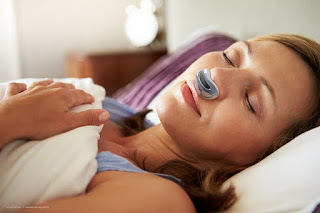How is Philippines Medical Device Market
Positioned?
The Philippines
Medical Device Market remains one of the most lucrative markets in the
country. The market has showed a positive CAGR of ~ for the financial year
2013-2018 and is expected to grow at a CAGR of ~ for the financial year
2018-2023. The industry is witnessing a gradual rise in the revenue due to
higher demand for modern and sophisticated equipments as the number of
geriatric population and morbidity in the country is on a rise. The overall
revenue in the medical device industry witnessed a rising trend on account of
increase in healthcare expenditure by the government which further led to
increase in the number of hospitals, clinics and Diagnostic Lab Centers. The
number of hospitals and clinics in Philippines increased from ~ in the year
2013 to ~ in 2018.

Moreover,
ageing population has also significantly contributed to the growth of the
market. The percentage of elderly people (65 and above) in the Philippines will
most likely grow to ~ percent by 2020; ~ percent by 2025 and ~ percent by 2030,
which will subsequently lead to more number of orthopedic procedures, hence
elevating the market.
The Medical
Consumables market in terms of overall revenue has expanded at a steady pace
with a CAGR of ~% during the review period 2013 to 2018, wherein the revenue
from Diagnostic Imaging Products grew at a CAGR of ~% and revenue from cardiac
Devices grew at a CAGR of ~% during the same period. The share of revenue from
Respiratory Products and auxiliary products grew constantly during the period
2013 to 2018.
How is the Philippines Medical Device Market
Segmented?
By Type of Business Activity: Philippines heavily rely on imports
for medical devices and have accounted for ~% of the revenue share in
Philippines Medical Device Market in 2018. The distributor margin of medical
devices is around ~% for imports. The local manufacturers majorly deal in
manufacturing and distribution of medical equipments and medical consumables
such as Syringes, Needles, Catheters, Bandages, Dressings and others. The
domestic production of medical devices in Philippines accounts for roughly ~%
of the market share generating revenue worth USD ~ million in 2018.
By Mode of Sales: Direct Sales have accounted for the
largest share of ~% of the revenue in Philippines Medical Device Market in 2018
majorly due to high reliance on imports of medical devices. Distributor
Mediated Sales have accounted for ~ % of the revenue in Philippines Medical
Device Market in 2018.
By Type of Medical Device: Medical Consumables have accounted
for the largest share of ~% of the revenue share in Philippines Medical Devices
market in 2018. The largest share is majorly due to large number of end users.
These items are required by all the healthcare institutions such as hospitals,
clinics, primary healthcare centers, laboratories and others. This is followed
by Diagnostic Imaging product with ~%, Dialysis Machine with ~%, Cardiac
Devices with ~%, Respiratory Products with ~%, Hospital Furniture with ~%,
Auxiliary devices with ~%, Dental and Orthopedic Products with ~% and
Ophthalmic Devices with ~%. Others which include devices like aesthetic
Devices, IV Diagnostics, Physiotherapy devices instruments and appliances for
medical use have accounted for ~% of the overall market revenue.
By Type of Medical Consumables: Syringes, Needles and Catheters have
accounted for the major share of ~% in the Philippines medical consumables
market in 2018. Bandages and dressings have accounted for the second largest
share of ~% and Suturing materials have contributed ~% to the revenue share.
Ostomy products have accounted for ~% of the market and other consumables
registered ~% of the revenue share.
By Type of Diagnostic Imaging Product: X-ray Based Products have accounted
for the major share of ~% followed by Ultrasounds with ~%. CT scan and MRI have
contributed ~% and ~% Electrodiagnostic apparatus and ECG have accounted for ~%
and ~% of the market and other devices such as Product based on UV or infrared
application radiation registered ~% of the revenue share.
By Type of Cardiac Device: The cardiac device market accounted
for USD ~ Million in the overall Medical Device Market in 2018 with Angioplasty
Devices leading with ~% of the overall revenue in this segment for the year
2018. Out of ~ registered deaths in 2016, ~ cases or ~ percent of the total was
due to ischemic heart disease and ~ reported deaths due to other heart diseases
in Philippines which is the main reason for the growth of this market.CRM
Devices such as Cardiac Rhythm
Management: ICD, Implants and Pacemaker have accounted for the second
largest share of ~% in the medical consumables market. Cardiac Surgery Devices
such as Heart-Lung Machine and Valves have contributed ~% to the revenue share.
By Type of Respiratory Product: Therapeutic Appliances have accounted
for the major share of ~% in the Philippines medical consumables market in
2018. Diagnostic Devices and Monitoring have contributed ~ % to the revenue
share.
By Type of Auxiliary Product: Hearing Aids have accounted for the
major share of ~% in the Philippines medical consumables market in 2018.
Artificial body parts excluding artificial teeth and joints have contributed ~
% to the revenue share and other auxiliary products including implants
registered ~ % of the revenue share.
By End Users: Hospitals both public and private are
the major end users of medical devices and have accounted for ~ % of the
revenue in Philippines Medical devices market in 2018. The medical clinics and
Laboratories and other healthcare institutions together have contributed ~% of
the revenue.
Key
Segments Covered:
By
Type of Business Activity
Imports
Domestic Production
By
Mode of Sales
Direct Sales
Distributor Mediated
By
Type of Medical Devices
Medical Consumables
Diagnostic Imaging Products
Dialysis Machine
Cardiac Device
Respiratory Products
Hospital Furniture
Auxiliary Devices
Dental and Orthopedic Products
Ophthalmic Devices
By
End Users
Hospitals
Clinics and Diagnostic Lab Centers
Others (Home Healthcare, Telemedicine
Centers)
By
Region
Luzon
Visayas
Mindanao
Key
Target Audience
Hospitals
Medical Device Manufacturers
Healthcare Research Firms
Healthcare Associations
Government Bodies
Distributors
Medical Device Technology Suppliers
Time
Period Captured in the Report:
Historical
Period: 2013-2018
Forecast
Period: 2019-2023E
Manufacturers
Covered:
GE Healthcare
Fresenius Philippines
Siemens Healthcare
Philips Healthcare
Medtronic
BD Healthcare
Terumo Healthcare
B Braun Philippines
Distributors
Covered:
Zuellig Pharma
Zafire
Metro Drugs Inc.
Health Solution Enterprises
Berovan Marketing Inc.
Patient Care Corporation
RBGM Medical Express Sales Inc.
Saviour MedDevices Incorporated
Transmedic Group
RG Meditron Inc.
Carestream
Philippine Medical System
Aljeron Medical Enterprise
Progressive Medical Corporation
Fernando Medical Enterprise
Medical One
Key
Topics Covered in the Report
Philippines Medical Device Market
Introduction
Value Chain Analysis in Philippines
Medical Devices
Philippines Medical Device Market
Size, 2013-2018
Philippines Medical Device Market
Segmentation
Philippines Medical Device Market
Segmentation by Type of Business Activity (Imports and Domestic Production)
Philippines Medical Device Market
Segmentation by Mode of Sales (Direct Sales and Distributor Mediated)
Philippines Medical Device Market
Segmentation by Type of Medical Devices (Medical Consumables, Diagnostic
Imaging, Dialysis Machine, Cardiac Device, Respiratory Product, Hospital
Furniture, Auxiliary Devices, Dental and Orthopedic Products, Ophthalmic Devices
and Others)
Philippines Medical Device Market
Segmentation by Type of Medical Consumables (Syringes, Needles, Catheters,
Bandages, Dressings, Suturing materials, Ostomy Products and Others)
Philippines Medical Device Market
Segmentation by Type of Diagnostic Imaging Products (X-ray Based Products,
Ultrasound, CT Scan, MRI, Electrodiagnostic Apparatus, ECG and Others)
Philippines Medical Device Market
Segmentation by Type of Cardiac Device (Angioplasty Device, CRM Devices and
Cardiac Surgery Devices)
Philippines Medical Device Market
Segmentation by Type of Respiratory Product (Therapeutic Appliances, Diagnostic
Devices and Monitoring Devices)
Philippines Medical Device Market
Segmentation by Type of Auxiliary Product (Hearing Aids, Artificial Body Parts
and Others)
Philippines Medical Device Market
Segmentation by End Users (Hospitals, Clinics and Diagnostic Lab Centers and
Others)
Philippines Medical Device Market
Segmentation by Region (Luzon, Visayas and Mindanao)
Decision Making Process to Shortlist
Medical Device in Philippines
Pain Points Faced by Customers from
Buying Medical Devices in Philippines
Trends and Developments in Philippines
Medical Devices Market
Issues and Challenges in Philippines
Medical Device Market
Porters Five Forces Analysis in
Philippines Medical Device Market
Regulatory Environment for Philippines
Medical Devices Market
Competitive Landscape in Philippines
Medical Devices Market
Company Profiles of Major Players in
Philippines Medical Devices Market
Company Profiles of Major Local
Distributors in Philippines Medical Devices Market
Company Profiles of Local Players in
Philippines Medical Devices Market
Philippines Medical Devices Market
Future Outlook and Projections, 2019-2023
Analyst Recommendations in Philippines
Medical Device Market
For
more information, refer to below link:
Related
Reports
Contact
Us:
Ken Research
Ankur Gupta, Head Marketing &
Communications
+91-9015378249





